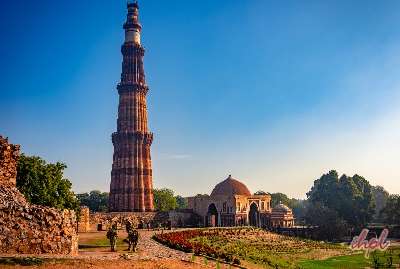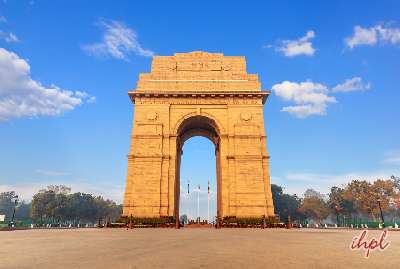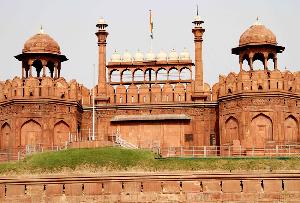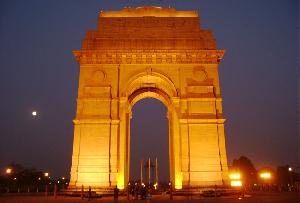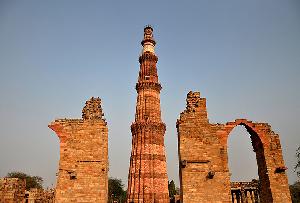Qutub Minar, a UNESCO World Heritage Site is the highest stone tower in India. The construction of the Qutub Minar was started by Qutub-ud-Din Aibak in 1199 and was finished by his successor and son-in-law, Iltutmish. This magnificent structure was named after the Sufi saint, Khwaja Qutubuddin Bakhtiyar Kaki. Though the exact purpose of the Qutub Minar is not known but it is believed that it served as a minaret to the adjoining mosque and was used by the muezzins to call the faithful to prayer.
Description
Constructed in red and buff sandstone and covered with intricate carvings and verses from the Holy Quran, Qutub Minar has five stories surrounded by a projected balcony and buttressed by stone brackets, which are decked with honeycomb designs. The Qutub Minar is 72.5m high and there are 379 steps. The diameter of the base is 14.3m while the top floor’s diameter measures 2.7m.
There are numerous inscriptions on the Qutub Minar in Arabic and Nagari characters. The inscriptions contain information on the work done on the Qutub Minar by different rulers like Firoz Shah Tughlaq, Sikandar Lodi, as well as by Major R. Smith. It was built on the ruins of Lal Kot, the Red Citadel in the city of Dhillika, the capital of the Tomar and Chauhana Rajputs, the last Hindu rulers of Delhi.
There are many other remarkable buildings and structures in the Qutub Minar complex, including the Quwwat-ul-Islam mosque, the first mosque built in India. It was constructed by Qutub-ud-din Aibak using materials of 27 Jain and Hindu temples. There is also the famous Alai Darwaza at the entrance of the Quwwat-ul-Islam mosque, built by Ala-ud-din Khilji. To the west of the Quwwat-ul-Islam mosque is the tomb of Iltutmish. Close to the mosque is the 4th century Iron pillar, one of Delhi’s most interesting structures.
History:
A glance at this tall imposing tower of Delhi called the Qutub Minar will give you the details about its history. This red and buff colored sandstone structure of Qutub Minar has a unique towering presence. It’s considered to be the tallest tower of India.
The foundation of Qutub Minar was laid by Qutubuddin Aibak in 1193 and it was completed by Illtutmish and then Firoz Shah Tughluq in 1368. Built of red sandstone, one can witness the stark differences in architecture of different periods and different dynasties.
The monument located near Mehrauli rises to a height of 237.8 ft. It has a series of 399 steps to reach the topmost level. When Qutubuddin Aibak was crowned the king he wanted to celebrate the victory of Islam and the fall of the Hindu empire. So he built this tower to establish the supremacy of the Islam over the Hindu monarchy.
The high standing tower has shafts and balconies and the walls are adorned with inscribed verses from Quran. Intricate carvings lend an exquisite look to the minaret. There are inscriptions that tell us the history of Qutub Minar.
The tall column of red stone has been a silent witness to the changing dynasties and passing time. The meaning of the word Qutub Minar is “axis minaret”. The first three stories of the tower are made of red sandstone by Qutubuddin Aibak and Iltutmish and the last two stories are made of marble by Firoz Shah Tughluq. The Quwwat-ul-Islam mosque is located near the minaret. It is considered to be one of the oldest mosques in India.
Know more about this Indian heritage site with our customized golden triangle tour package.




